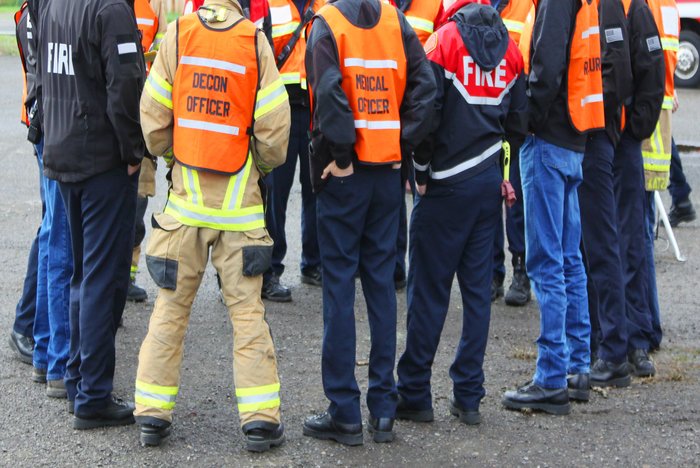
Anybody in emergency medical services knows the critical role pre-planning plays in the success of your operations. As an emergency responder, you must be ready to confront a wide range of critical situations. It is not enough to learn from your mistakes—you must actively pursue training and educational opportunities that provide real-world situations and responses.
Fortunately, EMS pre-planning has evolved into a national, even international, collaboration among responders, with numerous agencies (local, state, national, and international) working cooperatively to meet the challenges of emergency preparedness. This is especially true of MCIs.
MCIs DEFINED
FEMA defines an MCI, or Mass Care Incident, as any event, planned or unplanned, that results in the need to provide medical care to patients outside of traditional hospital settings.¹ It further defines these events as:
- Planned—special events such as sports or political protests
- Unplanned—terrorism, earthquakes, natural disasters, or weather-related incidents
FEMA's "Operational Templates and Guidance for EMS Mass Incident Deployment" is a compendium on pre-planning for MCIs. It provides policy guidelines for a broad range of mass care situations, including a detailed list of case studies in which MCI deployments have been utilized.
If you play a role in your department's MCI readiness, FEMA recommends first identifying the hazards particular to your area. There is no need to prepare for a hurricane if you live in the central Midwest, so focus on potential events in your region. FEMA's Basic Hazard Vulnerability Analysis is broken down into the following characteristics:
Geographic Characteristics
- Geography—Describe any geographic features such as known fault lines, features that result in geographic isolation of one or more parts of the jurisdiction (limited river crossings, mountain passes, etc.).
- Climate—Describe the climate by season with a focus on climate conditions that have Emergency Medical Services (EMS) implications such as heat waves, periods of extreme cold, snow, wind hazards, or other weather-related data that pose a hazard to the public.
Demographic Characteristics
- Economic Factors—Describe the economic situation in the community. Include average income, home prices, occupancy rates, and unemployment at a minimum.
- Crime Statistics—Describe the crime rate for crimes against persons and any other special criminal risks (gang activity, narcotics trafficking, etc.) that pose special risk to the jurisdiction.
Specific Hazards
- Summarize the type of hazards present in your jurisdiction. Describe the specific hazards found in the community, natural and/or man-made, using historical data for risk assessment.
As you focus on the MCI hazards in your region, you must also address your department's readiness to handle such situations. One of the first steps in pre-planning for MCIs is to ensure you have the necessary equipment—and some of the most important pieces of equipment in your MCI arsenal are your portable suction units.
Portable Suction Readiness for MCIs
Whether you are responding to a natural disaster or a terrorist event, you will most likely encounter critical patients. And many of these critical patients will require suction. To ensure your medical suction plan is ready for an MCI, here are several recommendations:
Number of Units
- The number of portable suction units you may need will depend on the size of your agency, the proximity of other agencies available for mutual response, and the budget available for purchase.
Type of Units
- For mass care incidents, smaller, more portable units may be preferred. Smaller units can be tucked within trauma or airway bags and will not require additional hands. A range of sizes can also be employed, with larger units offering adjustable pressure for special populations, such as pediatrics and the elderly.
Power Options
- In the event of natural disasters, when electrical power is in short supply or non-existent, you will need portable suction units that can run on alkaline batteries or alternative power sources. Extra batteries can be kept on the MCI trailer, replacing low or dead batteries as the need arises.
Maintenance is Key
- Portable suction units assigned to an MCI trailer may go unused for long periods of time. It is essential that these units are checked on a regular basis, to ensure they are operational when needed. Checkout should include:
- Turning each unit on to gauge battery life and operational readiness
- Ensuring each unit has the necessary adjuncts, such as tubing and catheters
- Storing units in a climate-controlled environment, to avoid temperature extremes
- Securing units to avoid rough handling and damage
MCIs can happen anywhere, at any time. To ensure your agency is ready, be sure to follow established guidelines on pre-planning and readiness, and be sure your medical suction plan is included in your strategy.
¹ 2012, Operational Templates and Guidance for EMS Mass Incident Deployment, https://www.usfa.fema.gov/downloads/pdf/publications/templates_guidance_ems_mass_incident_deployment.pdf














